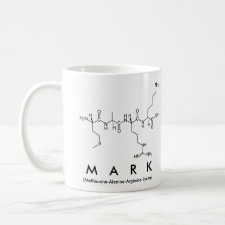
Authors: Salian VD, Vaughan AD, Byrne ME
Article Title: The role of living/controlled radical polymerization in the formation of improved imprinted polymers.
Publication date: 2012
Journal: Journal of Molecular Recognition
Volume: 25
Issue: (6)
Page numbers: 361-369.
DOI: 10.1002/jmr.2168
Abstract: In this work, living/controlled radical polymerization (LRP) is compared with conventional free radical polymerization in the creation of highly and weakly cross-linked imprinted poly(methacrylic acid-co-ethylene glycol dimethacrylate) networks. It elucidates, for the first time, the effect of LRP on the chain level and begins to explain why the efficiency of the imprinting process is improved using LRP. Imprinted polymers produced via LRP exhibited significantly higher template affinity and capacity compared with polymers prepared using conventional methods. The use of LRP in the creation of highly cross-linked imprinted polymers resulted in a fourfold increase in binding capacity without a decrease in affinity; whereas weakly cross-linked gels demonstrated a nearly threefold increase in binding capacity at equivalent affinity when LRP was used. In addition, by adjusting the double bond conversion, we can choose to increase either the capacity or the affinity in highly cross-linked imprinted polymers, thus allowing the creation of imprinted polymers with tailorable binding parameters. Using free radical polymerization in the creation of polymer chains, as the template - monomer ratio increased, the average molecular weight of the polymer chains decreased despite a slight increase in the double bond conversion. Thus, the polymer chains formed were shorter but greater in number. Using LRP neutralized the effect of the template. The addition of chain transfer agent resulted in slow, uniform, simultaneous chain growth, resulting in the formation of longer more monodisperse chains. Reaction analysis revealed that propagation time was extended threefold in the formation of highly cross-linked polymers when LRP techniques were used. This delayed the transition to the diffusion-controlled stage of the reaction, which in turn led to the observed enhanced binding properties, decreased polydispersity in the chains, and a more homogeneous macromolecular architecture. Copyright © 2012 John Wiley & Sons, Ltd
Template and target information: ethyl adenine-9-acetate, EA9A
Author keywords: molecular imprinting, Macromolecular memory, living polymerization, RAFT, Controlled polymerization, enhanced binding properties, Polymer reaction analysis



Join the Society for Molecular Imprinting

New items RSS feed
Sign-up for e-mail updates:
Choose between receiving an occasional newsletter or more frequent e-mail alerts.
Click here to go to the sign-up page.
Is your name elemental or peptidic? Enter your name and find out by clicking either of the buttons below!
Other products you may like:
 MIPdatabase
MIPdatabase









